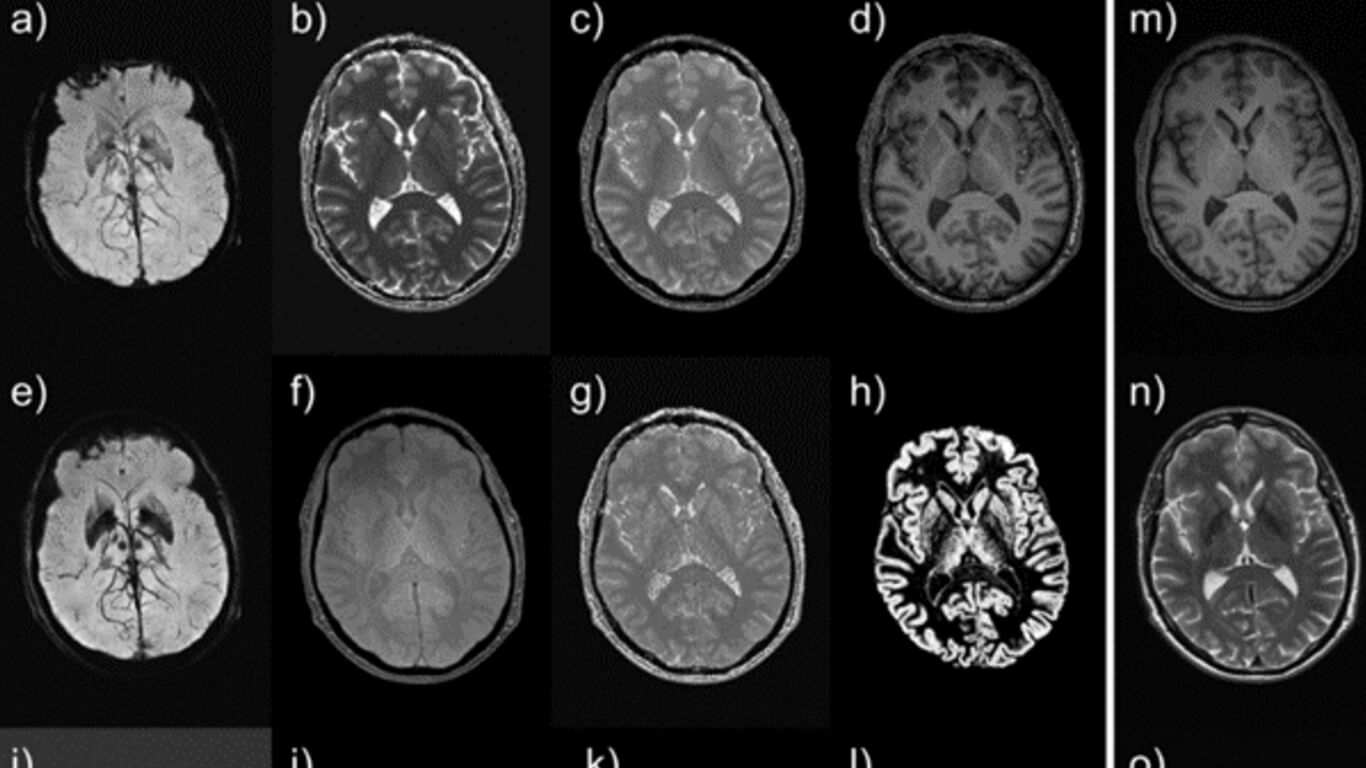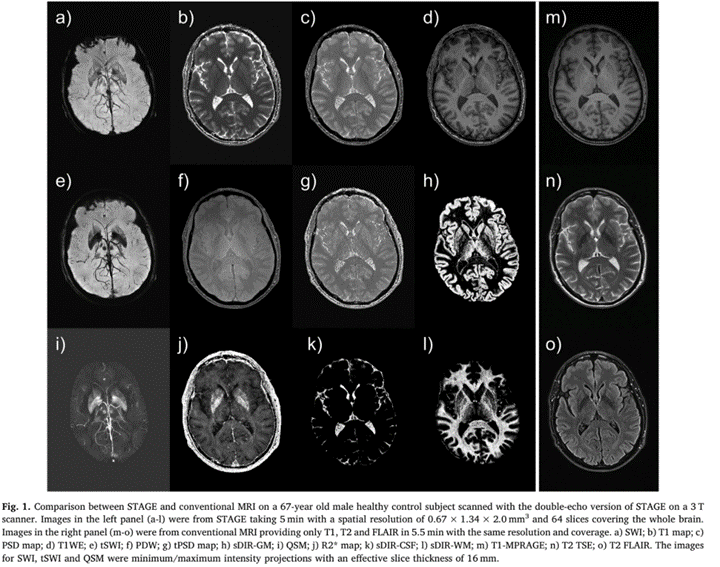
STrategically Acquired Gradient Echo (STAGE) imaging, part III: Technical advances and clinical applications of a rapid multi-contrast multi-parametric brain imaging method
By: Karen Holzberger, President & CEO of SpinTech MRI
Author(s): E. Mark Haackea,b,c,⁎ , Yongsheng Chena,d , David Utriainenb,c , Bo Wuc , Yu Wange,f , Shuang Xiag , Naying Heh , Chunyan Zhangi , Xiao Wangi , M. Marcella Laganaj , Yu Luok , Ali Fatemil , Saifeng Liub , Sara Gharabaghic , Dongmei Wue , Sean K. Sethia,b,c , Feng Huangf , Taotao Sunm, Feifei Qua , Brijesh K. Yadava , Xiaoyue Man,o , Yan Bain,o , Meiyun Wangn,o,⁎⁎, Jingliang Chengi , Fuhua Yanh
Journal: Magnetic Resonance Imaging
Published: 2020
Read Full Paper: https://www.sciencedirect.com/science/article/abs/pii/S0730725X19303820
Abstract

One major thrust in radiology today is image standardization with a focus on rapidly acquired quantitative multi-contrast information. This is critical for multi-center trials, for the collection of big data and for the use of artificial intelligence in evaluating the data.
Strategically acquired gradient echo (STAGE) imaging is one such method that can provide 8 qualitative and 7 quantitative pieces of information in 5 min or less at 3 T. STAGE provides qualitative images in the form of proton density weighted images, T1 weighted images, T2* weighted images and simulated double inversion recovery (DIR) images. STAGE also provides quantitative data in the form of proton spin density, T1, T2* and susceptibility maps as well as segmentation of white matter, gray matter and cerebrospinal fluid. STAGE uses vendors’ product gradient echo sequences. It can be applied from 0.35 T to 7 T across all manufacturers producing similar results in contrast and quantification of the data.
In this paper, we discuss the strengths and weaknesses of STAGE, demonstrate its contrast-to-noise (CNR) behavior relative to a large clinical data set and introduce a few new image contrasts derived from STAGE, including DIR images and a new concept referred to as true susceptibility weighted imaging (tSWI) linked to fluid attenuated inversion recovery (FLAIR) or tSWI-FLAIR for the evaluation of multiple sclerosis lesions.
The robustness of STAGE T1 mapping was tested using the NIST/NIH phantom, while the reproducibility was tested by scanning a given individual ten times in one session and the same subject scanned once a week over a 12-week period.
Assessment of the CNR for the enhanced T1W image (T1WE) showed a significantly better contrast between gray matter and white matter than conventional T1W images in both patients with Parkinson’s disease and healthy controls. We also present some clinical cases using STAGE imaging in patients with stroke, metastasis, multiple sclerosis and a fetus with ventriculomegaly. Overall, STAGE is a comprehensive protocol that provides the clinician with numerous qualitative and quantitative images.

